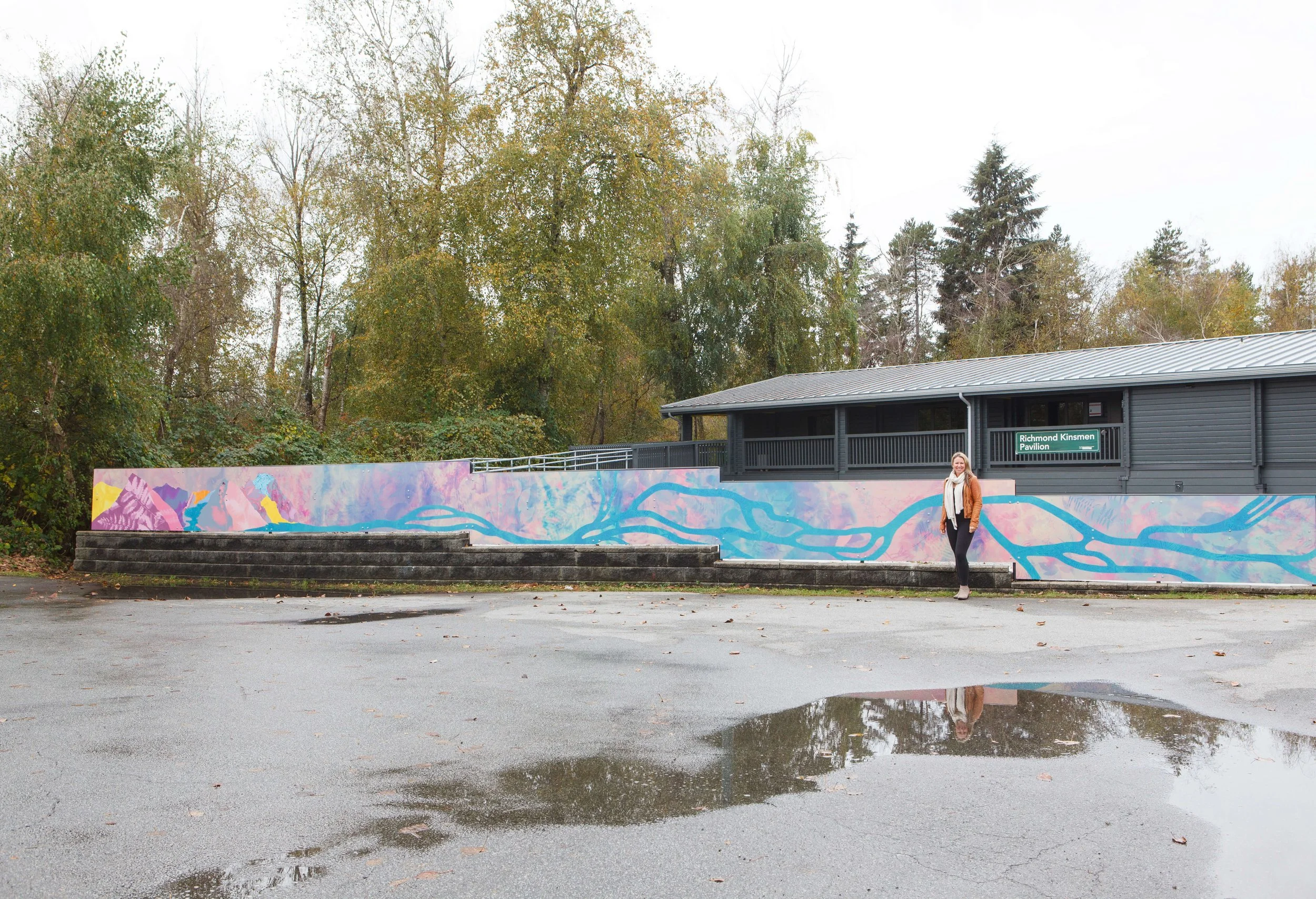Working with alternative photographic techniques requires a willingness to surrender—to let go and embrace the unexpected. Our scheduled Chlorophyll print-making workshop exemplified this beautifully. While UV exposure is crucial for this process, the weather forecast threatened rain and cloudy skies. Undeterred, I devised a contingency plan to ensure an engaging afternoon of art-making for our participants.
The diverse group of local community members eagerly delved into two camera-less photography methods, which we divided into separate sessions throughout the day.
Trust-building exercises started the workshop, and soon the group was immersed in the history and process of Chlorophyll print-making. Despite its apparent simplicity, this technique is the most challenging alternative photography form I’ve worked with. Patience becomes essential as one navigates the unpredictability of working with nature—an excellent teacher for on-the-fly problem-solving.
Participants were paired-up to collaborate on the creation of leafy compositions, this intentionally integrated to depart individuals from the usual solitary art-making process. Groups were provided with a selection of transparencies sourced from the Richmond Nature Park Society’s slide negatives archive. Scanning biophilic compositions from the 1970s onwards, I aimed for intriguing fusions with our contemporary project. This merger of past creative exploration and our current program symbolizes the park’s enduring role as a place that has fostered artistic endeavors for over fifty-four years.
Between exposures, we embarked on a nature walk led by park botanist Angela Soon, and zoologist Hugh Griffith. Their insights into local flora and bird species fascinated us. The real gem was the Merlin app—an auditory delight that identifies birds by their songs. As we listened, we deepened our connection to the biodiversity surrounding us.
Guided walks in the park are integral to every workshop I facilitate. The juncture of environmental education and sensual experiences with nature forms the cornerstone of my creative process, which I eagerly share with the groups.
After this inspiring time in nature, we seamlessly transitioned to the Lumen print-making portion of the day where participants composed botanical artworks on 5x7" pieces of photographic paper.
As the group carefully composed their artistic expressions, the shelter echoed with live music by Erzsi Institorisz—a talented Richmond musician, environmental advocate, and founder of the Greenseeds Music Society.
In the available UV light, the group exposed their prints for approximately twenty minutes. As each participant unveiled their Lumen masterpieces, ghostly floral depictions emerged—each unique to the artist’s creativity. Witnessing everyone’s excited reactions during the unveiling brought immense joy. These processes never fail to surprise; their element of unpredictability taps into our curious, child-like qualities.
Having large groups come together to explore new forms of art-making is such a great opportunity to learn from the varied outcomes as everyone’s artwork renders uniquely.
Another aspect I love about Lumen prints is their ephemeral nature—they gradually fade into black over time, if untreated. As I refuse to use the toxic ‘fixer’ required for preservation, I scanned the prints to create a digital archive for each participant. I additionally introduced the group to the option of making their own organic fixing agent made from just salt and water. Participants eagerly took home their originals to conduct longevity experimentation.
As with all workshops in this program, the artistic expressions from each session are also kept on my hard drive as these will accumulate into a collaged public artwork, set to be unveiled at the Richmond Nature Park, later this fall.
The day was exceptionally fulfilling for me, and I believe the group shared a similar sentiment. I extend my gratitude to the remarkable members of the community who embraced something new, and participated in this creative event at the Nature Park. A special acknowledgment goes to my assistant for the day, Erzsi Institorisz, whose impeccable presence infused the day with magical energy, and once again, I express my thanks to the Richmond Nature Park, the Park Society, and the City of Richmond for their unwavering support, which significantly contributed to the workshop’s resounding success.



























